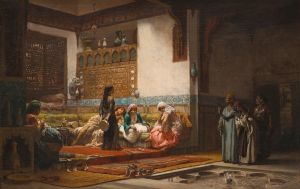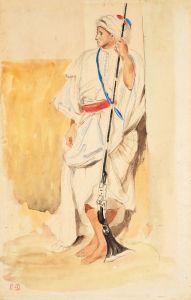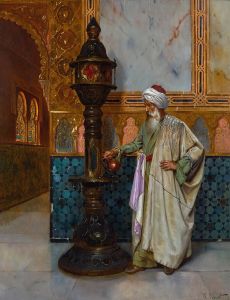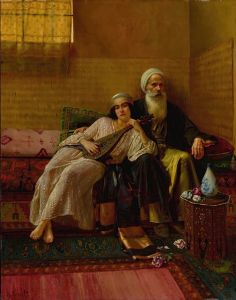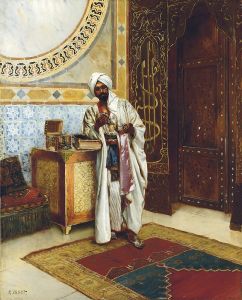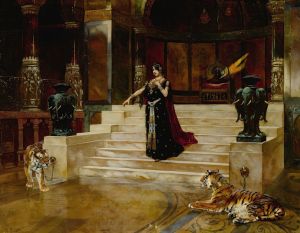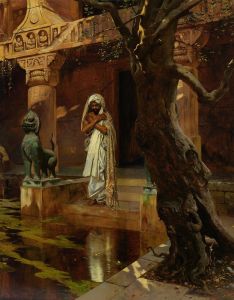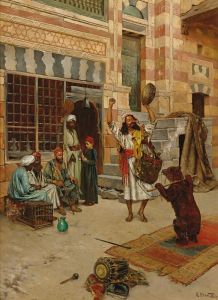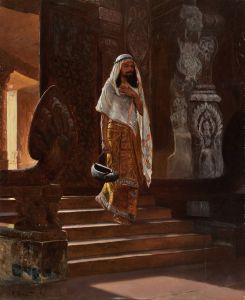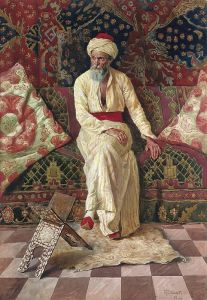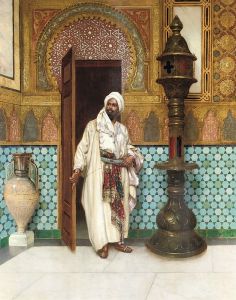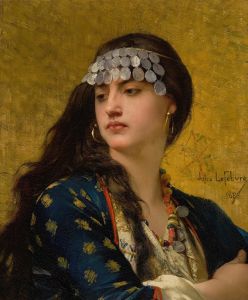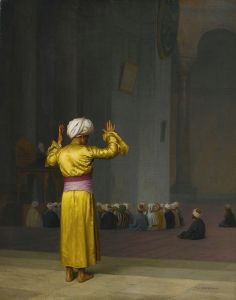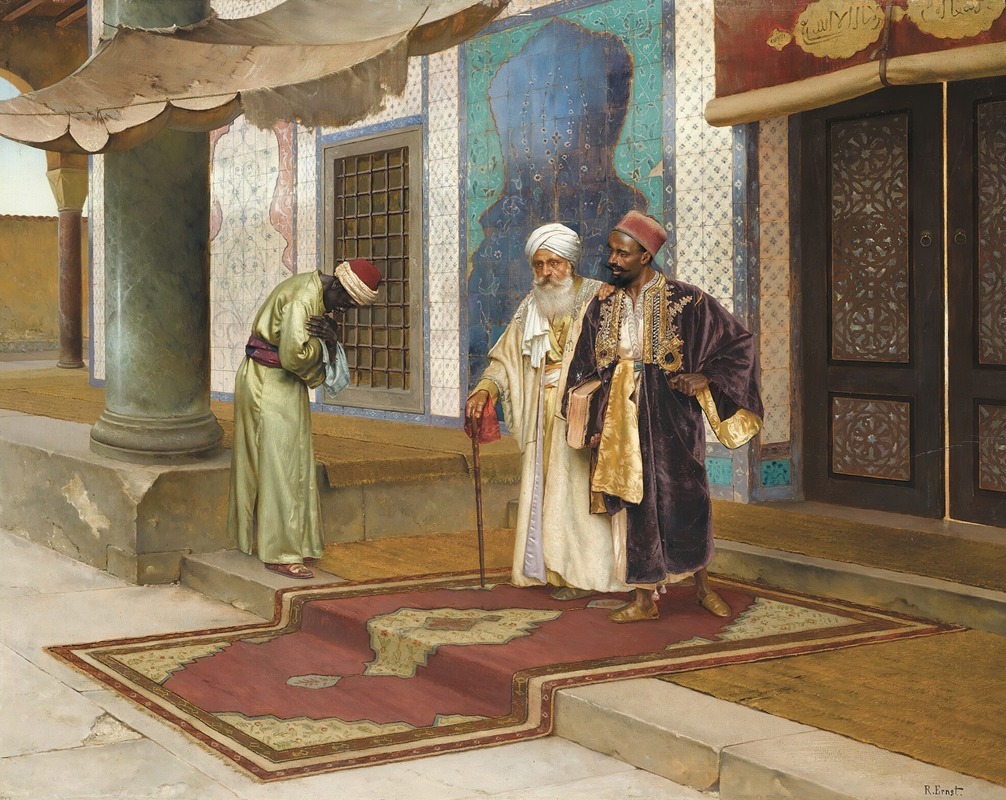
Leaving The Mosque
A hand-painted replica of Rudolf Ernst’s masterpiece Leaving The Mosque, meticulously crafted by professional artists to capture the true essence of the original. Each piece is created with museum-quality canvas and rare mineral pigments, carefully painted by experienced artists with delicate brushstrokes and rich, layered colors to perfectly recreate the texture of the original artwork. Unlike machine-printed reproductions, this hand-painted version brings the painting to life, infused with the artist’s emotions and skill in every stroke. Whether for personal collection or home decoration, it instantly elevates the artistic atmosphere of any space.
Rudolf Ernst was an Austrian painter known for his Orientalist works, which often depicted scenes inspired by the cultures and landscapes of the Middle East and North Africa. "Leaving The Mosque" is one of his notable paintings, showcasing his fascination with the exotic and his meticulous attention to detail.
Ernst was born in Vienna in 1854 and studied at the Academy of Fine Arts in Vienna. He later moved to Paris, where he became part of the Orientalist movement, a genre that romanticized and depicted the East through a Western lens. This movement was popular in the 19th century and included artists who traveled to the Middle East and North Africa, drawing inspiration from the people, architecture, and landscapes they encountered.
"Leaving The Mosque" captures a moment outside a mosque, a central place of worship in Islamic culture. The painting is characterized by its vibrant colors and intricate details, which are hallmarks of Ernst's style. He was known for his ability to render textures and patterns with great precision, often incorporating elements such as ornate tiles, textiles, and architectural features that he observed during his travels or studied from various sources.
In this painting, Ernst likely aimed to convey a sense of the daily life and cultural practices in the regions he depicted. The scene might include figures dressed in traditional attire, emphasizing the diversity and richness of the clothing styles. The architecture of the mosque, with its domes and minarets, serves as a backdrop that highlights Ernst's interest in Islamic architectural forms.
Ernst's work, including "Leaving The Mosque," reflects the broader context of Orientalism, which has been both celebrated for its beauty and critiqued for its stereotypical and sometimes inaccurate portrayals of Eastern cultures. Orientalist artists like Ernst often relied on a mix of direct observation and imagination, which sometimes led to romanticized or exoticized depictions that catered to Western tastes and perceptions of the East.
Despite these critiques, Ernst's paintings are valued for their artistic merit and technical skill. His ability to capture light, texture, and intricate details makes his work stand out. "Leaving The Mosque" is a testament to his dedication to his craft and his fascination with the cultures he sought to represent.
Today, Rudolf Ernst's paintings, including "Leaving The Mosque," are held in various private collections and museums. They continue to be studied and appreciated for their contribution to the Orientalist genre and for the insight they provide into 19th-century Western perspectives on the East. Ernst's legacy is that of an artist who, through his detailed and vibrant works, offered a window into a world that was both real and imagined.





